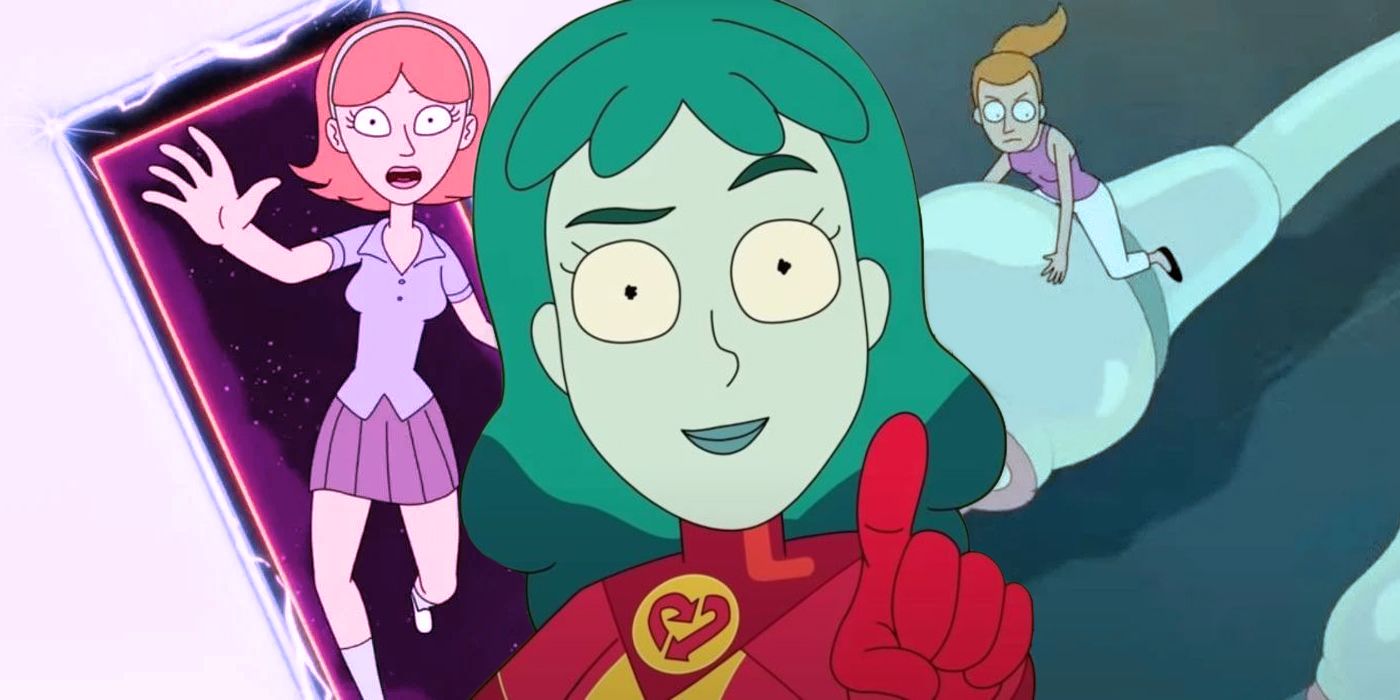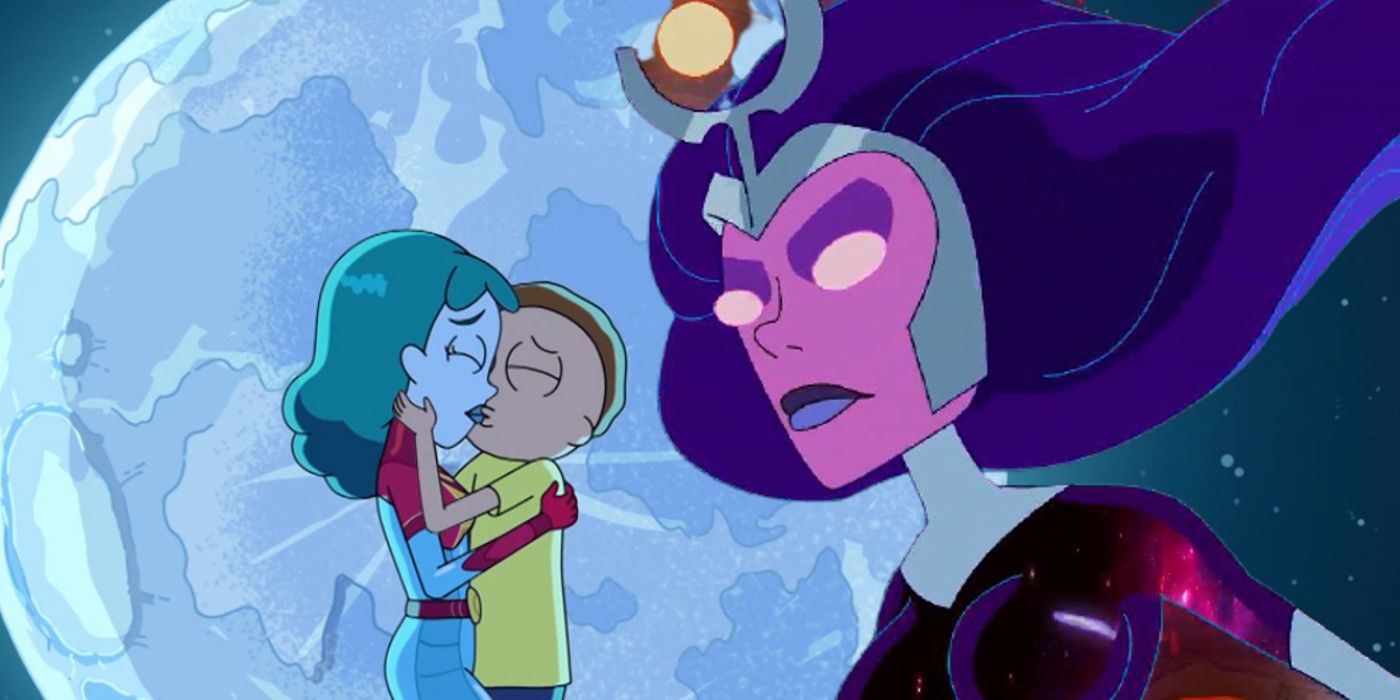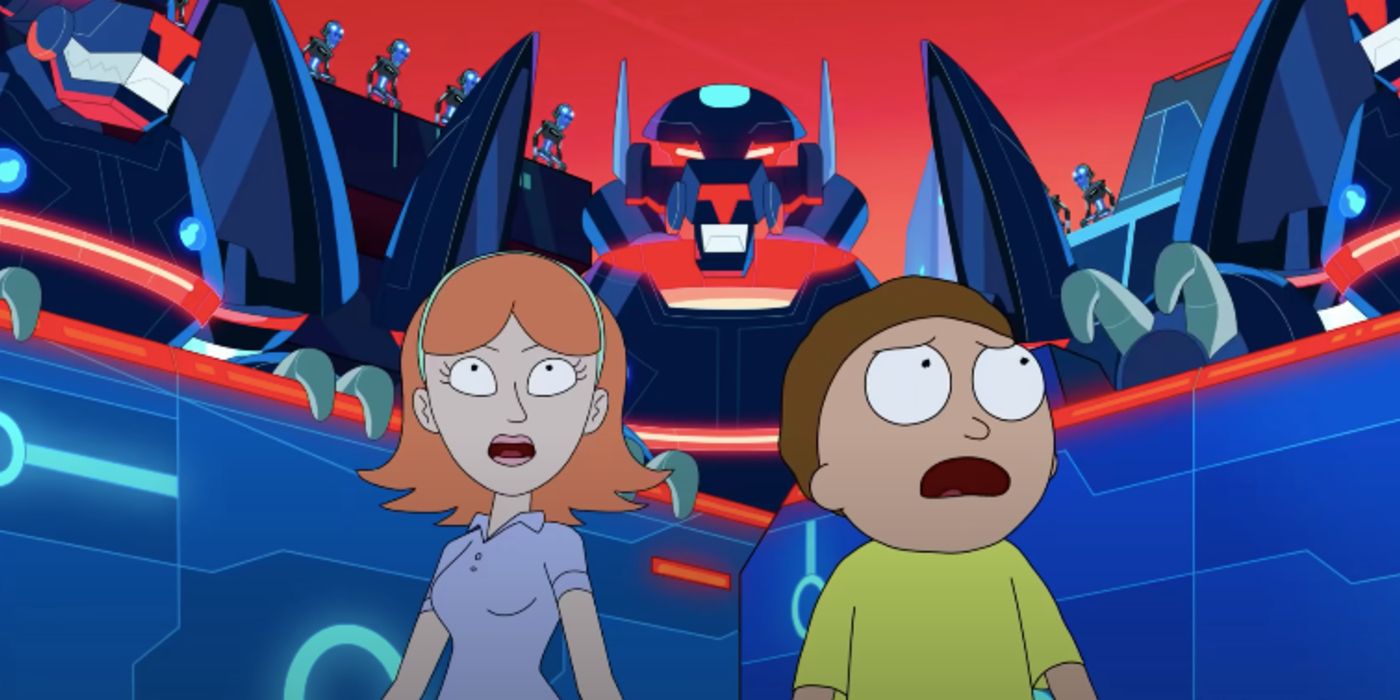WARNING: The following contains SPOILERS for Rick and Morty season 5.
The animated series Rick and Morty is using season 5 to finally fix an ongoing problem in the show: how the female characters are depicted, and the kinds of stories these characters get. This is not a new initiative: the Adult Swim series' ethos has evolved since season 1, and the addition of female writers in season 3 was a welcome one. However, despite the show's maturation, Rick and Morty hasn't been able to completely shake off undesirable elements from its past — that is, until now.
Rick and Morty premiered on Adult Swim in December 2013. There were high hopes for the series, which was co-created by Dan Harmon, who at the time was still hot off of his success with Community. The animated show began as a crass Back to the Future parody, but Rick and Morty evolved into something more nuanced and heartfelt. As the series' popularity grew, so did the complexity of its characters and the storytelling. Rick is a deeply layered character, capable of both complete self-absorbed nihilism and also acts of self-sacrifice and kindness. Morty too has grown, maturing from an insecure and helpless waif into a confident and competent adventurer in his own right.
Part of this change was likely intentional: it's no secret that Dan Harmon in particular is interested in distancing his show from the most toxic fans. However, change is also a natural part of a show's progression over time — especially when it's been on the air for several years. With this growth typically comes growing pains, and Rick and Morty is no exception: despite the positive direction, there have remained issues like Rick and Morty's problematic characterization of Jessica, or the show (seemingly) celebrating or rewarding Rick and Morty's worst attributes regarding their treatment of women. Season 5 is a turning point for the animated series because its found the balance between being true to the show's spirit and characters while also challenging the sexist tropes in the media it celebrates through parody and homage.
Rick & Morty's Past Problems (& How They're Being Fixed)
The fact that Rick and Morty season 5 is fixing the show's female representation is the culmination of the series' progress over the years. Creators Dan Harmon and Justin Roiland made the decision in season 3 to hire enough female writers that the staff had an equal 50-50 split. For context, at the time, all 47 showrunners at Adult Swim were male, and Rick and Morty was already a massive hit for the network — not to mention the viewership was predominantly young men (via THR). The move to hire female writers was a significant one that gestured at the direction the show was heading. It's not that the show was ever blatantly misogynist or that it lacked female characters — but the inclusion of female voices among the writing staff added a much-needed nuance to the stories involving characters like Beth and Summer. Not only that, but bringing women into the writing room signaled a challenge to the industry's lack of diversity. If a series like Rick and Morty, which airs on a male-dominated network catering to a predominantly male demographic, had gender equality on its staff, why couldn't every show?
The addition of female writers on Rick and Morty wasn't welcomed by all, however, and a small yet vocal segment of the fandom was outraged. While some showrunners may have balked or caved in response, Dan Harmon, in particular, stood his ground, making his feelings on the matter very clear. In an interview with EW back in September 2017, Harmon condemned the harassment of his female writers, describing the perpetrators as part of a "testosterone-based subculture" and stating about such toxic fans, "I’ve made no bones about the fact that I loathe these people." And since season 3, female writers have continued to have a significant presence behind the scenes: Erica Hayes directed some of the best episodes in season 4, while Anne Lane wrote the standout episode "Star Mort Rickturn of the Jerri" (the season 4 finale, which introduced Space Beth) and the season 5 episode "Amortycan Grickfitti."
Since season 3, Rick and Morty has increasingly used Beth and Summer more effectively and introduced fun and exciting female characters. The season 3 episode "Vindicators 3: The Return of Worldender," for example, introduced Supernova, who had a great villainous turn in the final act. The episode was written by Sarah Carbiener & Erica Rosbe, and it was influential enough that Adult Swim is making a Rick and Morty spinoff based on it. There have been problems with the show too though: Jessica continued to be a two-dimensional sex object used for Morty's stories, and Rick and Morty seasons 3 and 4 did little to actually challenge misogyny. The best example of such is season 4's "Never Ricking Morty," which poked fun at Morty's inability to tell a convincing story that passed the Bechdel Test, but in a way that verged on celebratory. The scene was definitely funny, but in the absence of actual female voices to balance out Morty's imagined ones, "Never Ricking Morty" failed in criticizing androcentric storytelling.
Rick & Morty Season 5 Is A Turning Point For The Series
Rick and Morty season 5 has gone the extra step to distance the show from its most troubling past traits. The season 5 premiere fixed its most problematic character, Jessica, by addressing the shallow nature by which Morty has long pined for her. The story gave Jessica actual agency, and by the end of the episode, the story wrote her out of the series in an empowering way (by subverting the "damsel in distress" trope and turning her into a "Time God"). This hints that the Adult Swim show is closing the door on such storytelling, and going forward, even supporting female roles will be more than a vacuous space for which Rick or Morty's sexual fantasies can be projected (unless, of course, that's the point of the story).
After episode 1, Rick and Morty season 5 continued to fix problems in the show's format: humanizing Beth and Rick, making Summer more relatable, and giving Morty a meaningful, if tragic, love story. Season 5 has also been more openly critical of sexist tropes than any other season. The absurd story in Rick and Morty episode "Rickdependence Day" not only parodied action movies — it also addressed the genre's sexist tropes, fixing its own female story problem in the process. Unlike "Never Ricking Morty" which made a joke out of Morty's pathetic attempts to tell a female-focused story without offering an alternative or even just criticizing him, "Rickdependence Day" made jokes that mocked the sexist attitudes of the male characters, while also showing Summer and Beth reacting to the situation. When Summer is ignored and her idea is stolen by the scientist, Beth empathizes with her, inferring that this is a common experience for women. It's a quick exchange, but it calls out real-life sexist attitudes nonetheless. What's more, by the episode's end, Beth and Summer outdo the military personnel (while the president laments that they need more "manpower"). It's no coincidence that "Rickdependence Day" is an obviously male-focused story (revolving around action cliches and monstrous sperm), yet the most powerful figures in the episode are all women.
Female characters had a more prominent role in "Amortycan Grickfitti" as well, which brought back Rick's sentient (and sassy) ship A.I. and paired Beth and Rick for a dangerous adventure into hell. Rick and Morty season 5 hasn't been perfect, and no doubt many fans are anxious for a return to Grandpa Rick and Morty's escapades, but in the meantime, it's been a pleasure watching the show grow and mature. And based on the changes that have been made so far, the future is looking very promising for Rick and Morty.



